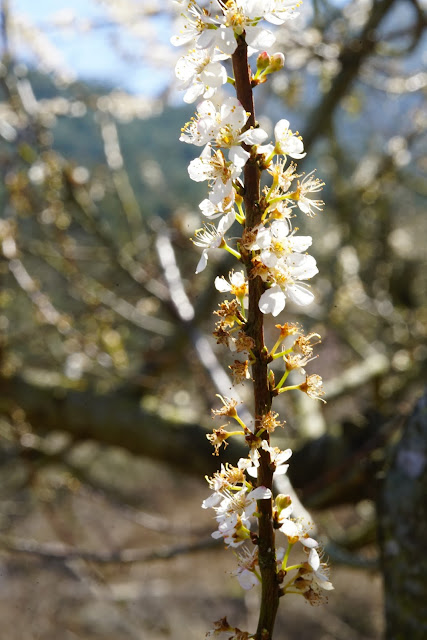聞道梅花坼曉風,
雪堆遍滿四山中。
何方可化身千億?
一樹梅花一放翁。
I hear the Mei blossoms are splitting the morning breeze
Filling the four hills with piles of snow
Is there a way to split myself into a trillion bodies
Each Mei a me.
tr. El Zorro
The second day of my Chinese New Year trip was supposed to be spent in a hill full of the Chinese plum blossom (梅花) but in fact was filled with a completely different flower, the prune flower (李花), also known as jade-color Mei (玉梅) or Little Ka Hing (嘉慶子). We went to a garden in eastern Huizhou (惠州市) called Liangfa Mei Gardens (梁化梅園). Before we arrived, we were told by our local guide that this garden is the most famous garden of its kind in the entire province of Quangdong and that each spring, more than 150,000 people would flock there to see the flower in full bloom.
But after we arrived, we were told by the garden staff there that we were just in time to be late by more than week, when the Chinese plum blossoms were then in full bloom at another part of the park.

But we managed to find one or two late bloomers
It wasn't what we expected of course.
But I suppose that it's still better than not having any single "Mei" tree at all!
It's small flowers are well spaced out on a branch and have very many long and slender stamens in bright yellow
We did not expect to find a valley with many prune blossoms (李花) in full bloom
but we did!
I never saw this kind of flower before.
So I was shocked to see so many of them growing so closely together on the same branch.
It looks as if they grow through the entire length of the upper tip of the branch.
They look so much like the Mei: as small but growing much more tightly together
A close up of part of a branch
See how close to each other they grow !
They seem to appear in huge clumps together
The flower packed tip of one of their branches

If they did not grow so close to each other, I would have a most difficult time telling the difference between one single prune flower from one single Chinese plum flower. In Japan, the Chinese plum flower is called the Japanese apricot! I suppose only the experts can tell us the minute differences.
Whatever the truth may be, to me they look like snow covered branches against the blue sky. If the Mei blossom represents endurance, toughness, independence and humility, then I would say the prune blossom represents profligacy and abandon.
















沒有留言:
張貼留言